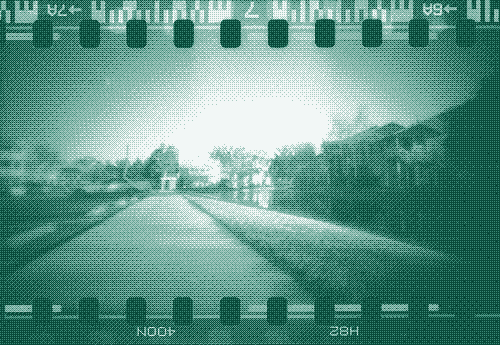
With the arrival of digital photography, the camera has joined the ranks of fast aging devices. Just as is the case with mobile phones, a 3 years old digital camera is hardly worth anything anymore. It might be useful to remember that a camera is nothing more than a darkened box with a small opening and a shutter, as demonstrated by the pinhole camera. In many senses, this device is the very opposite of the latest digital cameras.
What is a pinhole camera?
A pinhole camera is very easy to make yourself, although it can also be bought. Basically, it is a light-tight box with a tiny pinhole on one side (made with a needle) and photo paper or film on the other side (taped to the box). No lens, battery or automatic operation is used. A pinhole camera can be constructed from a can or a container, such as a mint tin or a tea can. The vessel used could also be a coffee pot, for instance.
A pinhole camera can be built from scratch using cardboard or wood, or made from an existing camera by removing the lens and replacing it with a pinhole. These low-tech cameras could be as small as a matchbox, but they might as well have the dimensions of a suitcase or a refrigerator as they allow you to produce gigantic photographs.
Be patient: one photograph a day
Operating a pinhole camera requires patience, skill and experience. A digital camera encourages you to take as many photographs as possible, but a pinhole camera makes you focus on just one or a few pictures. The camera has no viewfinder and it needs longer exposure times, from several seconds to hours.
With most simple devices you have to install a new film every time you want to take a new picture, something which can only be done in a dark room. If you want to take more than one picture on a trip, you have to bring several cameras (a way around this is to convert a traditional camera into a pinhole camera).
Be amazed: multiple pinholes and other effects
In return, a pinhole camera delivers pictures that are impossible to make with high-tech equipment. It creates soft and dreamlike images, an infinite field of depth, which makes these cameras ideal for photographing miniature models, and wide angle photographs that remain rectilinear - straight lines are not curved at the ends of the image.
If the image plane of a pinhole camera is flat, the image will be darker at the edges. If the plane is curved, this effect is avoided. A pinhole camera can have multiple pinholes or multiple film stripes, or it can be exposed several times, which yields some interesting effects.
Turn your bedroom into a camera obscura
Like any other camera, the pinhole camera is based on a natural phenomenon described as camera obscura (an effect that may have already been observed in prehistoric times).
If you sit in a dark room (“camera obscura” in Latin) on a bright day, a small aperture in the wall or through the curtains can project an accurate image from the outside view on the opposite wall.
Before photography was invented, this effect was enjoyed as a “live” projection. It can still be experienced in many Victorian buildings. Starting from the 16th and 17th century, the obscura was used as a drawing aid by artists (sometimes in the form of a tent) and as a scientific tool (for the study of solar eclipses).
Take note, April 27th, is worldwide pinhole day. Happy snapping!